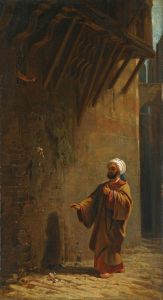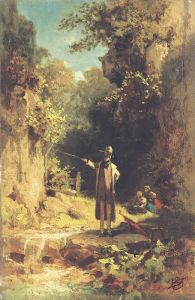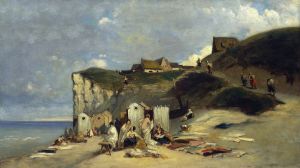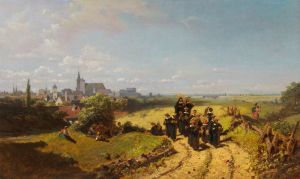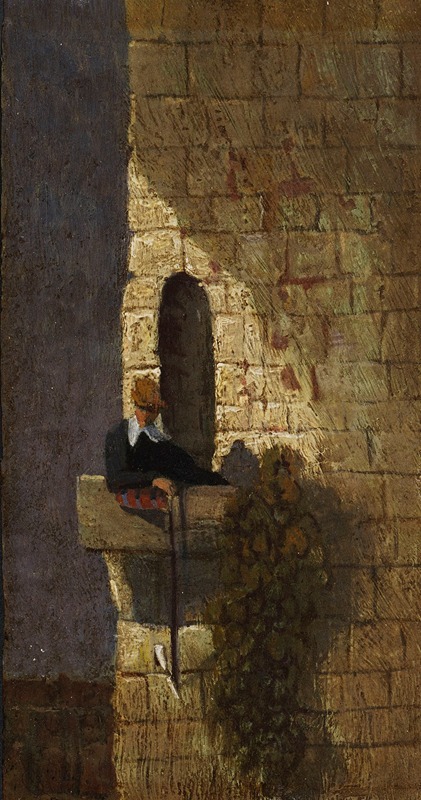
Der Student im Karzer
A hand-painted replica of Carl Spitzweg’s masterpiece Der Student im Karzer, meticulously crafted by professional artists to capture the true essence of the original. Each piece is created with museum-quality canvas and rare mineral pigments, carefully painted by experienced artists with delicate brushstrokes and rich, layered colors to perfectly recreate the texture of the original artwork. Unlike machine-printed reproductions, this hand-painted version brings the painting to life, infused with the artist’s emotions and skill in every stroke. Whether for personal collection or home decoration, it instantly elevates the artistic atmosphere of any space.
Carl Spitzweg's painting Der Student im Karzer (translated as The Student in the Detention Room) is a notable work by the German Romantic painter and poet, created in the mid-19th century. Spitzweg, known for his humorous and often satirical depictions of bourgeois life, frequently explored themes of individuality, eccentricity, and the quirks of everyday existence. This painting exemplifies his ability to capture intimate and whimsical moments with a keen eye for detail and a touch of irony.
The artwork portrays a university student confined to a "Karzer," a detention room historically used in German-speaking universities as a form of punishment for minor infractions. These Karzers were not harsh prison cells but rather symbolic spaces where students were temporarily isolated as a disciplinary measure. The practice was common in the 18th and 19th centuries and often associated with a sense of rebellious student culture. Students confined to the Karzer would sometimes use the opportunity to engage in creative activities, such as writing, drawing, or carving graffiti on the walls, leaving behind a record of their time there.
In Der Student im Karzer, Spitzweg depicts the student seated in a modest, dimly lit room, surrounded by sparse furnishings. The young man appears relaxed and contemplative, suggesting that his confinement is more of an inconvenience than a severe punishment. The details in the painting, such as the scattered books, a pipe, and the faint light streaming through the window, create a sense of quiet introspection. Spitzweg's characteristic use of warm, earthy tones and soft lighting enhances the intimate atmosphere of the scene.
The painting reflects Spitzweg's interest in the lives of ordinary people and his ability to find humor and humanity in everyday situations. By focusing on the student in this moment of solitude, Spitzweg captures a slice of 19th-century academic life while also commenting on the broader themes of youth, freedom, and authority. The work is a testament to Spitzweg's skill in blending narrative depth with visual charm.
Today, Der Student im Karzer is recognized as a fine example of Spitzweg's genre painting, which often celebrated the idiosyncrasies of human behavior. The painting is housed in a private collection, and its exact date of creation is not definitively documented, though it is generally attributed to the 1840s or 1850s, a period when Spitzweg was at the height of his artistic career.





